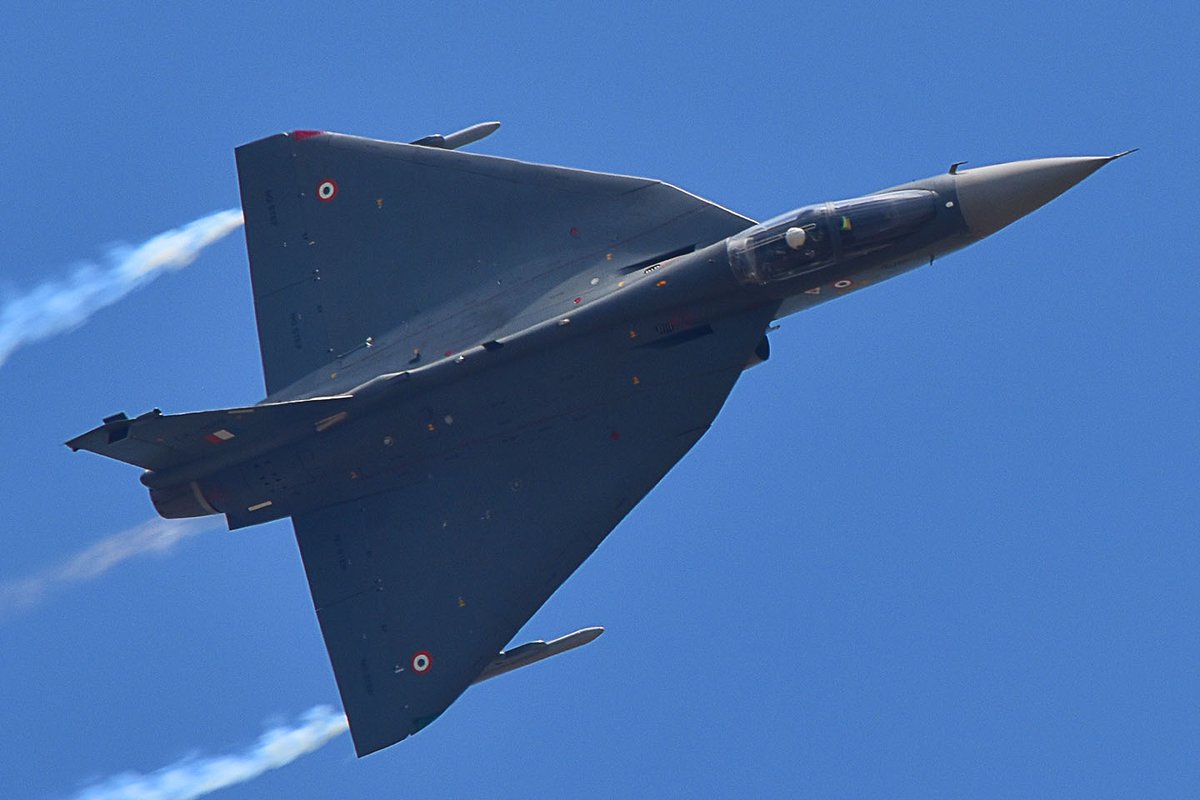Aviation experts believe India’s failure to develop indigenous fighter jet engines will greatly benefit the US engine maker – GE Aviation.
India’s Light Combat Aircraft (LCA) program gained a significant boost with the state-owned HAL on 18 August signing the contract worth Rs 5375 crores (USD 716 million) with GE Aviation for the supply of 99 F404 engines.
US Aircraft Carrier ‘Survives’ A Massive 40,000-Pound Explosion Near Its Hull — Watch
GE Aviation also won a $1.65 billion US Navy contract for the repair, upgrade or replacement of 17 F414 engine components in support of the F/A-18 Hornet aircraft, the Department of Defense announced.
“General Electric Aviation [of] Lynn, Massachusetts is awarded a not-to-exceed $1.65 billion…contract for the repair, upgrade or replacement, inventory management, and required supply response times of 17 F414 engine components in support of the F/A-18 aircraft,” the Defense Department said in a press release on Wednesday.
The contract will include a five-year base period and will be performed in Lynn, Massachusetts and Jacksonville, Florida, the release said. Work on the project is expected to be completed by August 2026, the release added.
The F404-GE-IN20 engines will power the 83 Tejas Mark 1A fighters ordered by the Indian Air Force from Hindustan Aeronautics Limited (HAL) under the largest ever domestic defense deal by the defense ministry.
Both Tejas Mark 1 and 1A use the F404-IN20, considered the highest thrust variant of the F404 family which incorporates GE’s latest hot section materials and technologies, as well as a FADEC (Full Authority Digital Engine Control) for reliable power and outstanding operational characteristics.
FADEC enables ignition and control of all aspects of the jet engine performance digitally and such engines feature in all modern aircraft.

HAL chairman and managing director R Madhavan described it as the “largest-ever deal and purchase order placed by HAL for the LCA.” He also said the HAL was working closely with GE for its support to pursue “the export potential of LCA and also to supply spares to the global supply chain of GE 404 engines.”
“The F404 family of engines has proven itself in operations all over the world and we have committed to deliver all 99 engines and support services by 2029”, Chris Cyr, Vice President of GE Aviation said at the signing of the deal.
Meanwhile, Madhavan had earlier said that a deadline of March 2022 had been set for the first flight of the Tejas MK-1A fighter. HAL has reportedly completed the preliminary and critical design review for several systems, which include the mission computer, digital map generator, and digital flight control systems.
The company is also working on integrating the critical systems such as AESA and the EW suite on the FOC version of LCA to test its eventual integration into the MK-1A final version.

GE-404 Family of Engines
For the last 40 years, GE’s F404 engine variants have powered over 15 different production and prototype aircraft. Some of the prominent fighters include the F-117 Nighthawk, F/A-18 Hornet, KAI’s T-50 Golden Eagle, HAL’s Tejas Mk1, and Saab’s JAS 39 Gripen.
The engine continues to power fighter aircraft around the world with no signs of retiring even after over four decades of strong performance.
The F404 continues to evolve and attract new customers. Boeing/Saab T-7A Red Hawk is powered by the F404’s newest variant, the F404-GE-103, and the aircraft has been chosen to train a new generation of US Air Force pilots guaranteeing a safe future for the versatile engine.
The F404 family of engines also powers multiple Korean aircraft, with the latest indigenous South Korean KF-X fighter jet choosing an advanced version F414-GE-400K engine.
Korea Aerospace Industries is developing KF-X for the country’s air force, which is considering retiring its fleet of McDonnell Douglas F-4 Phantom II and Northrop F-5E/F Tiger II fighters.
In fact, the French Rafale fighter aircraft started their journey using the F404 engine in the 1980s when the French M88 engines were still being tested. The first Rafale flew in 1986 using a couple of F404 engines.

The F404 family powers a wide range of fighter aircraft assigned to all sorts of missions from executing low-subsonic attacks to high-altitude interception. The first version of the F404 was developed to power the Boeing F/A-18, and non-afterburning derivatives powered the F-117A Stealth Fighter and the Singapore A4-SU Super Skyhawk, the company website claims.
According to GE, the F404 represents a revolution in ushering in economical fighter aircraft operations, with the engines requiring minimum maintenance helping bring down the operating cost of the aircraft.
As compared to the engines powering the F-16 and F-15s, the F404 had a lesser thrust, although that was somehow compensated by its lightweight and low operating cost.
GE is confident of the fact that F404 will continue to dominate the future with many countries failing to produce their own reliable engines. The company has multiple offers from nations developing their own aircraft, guaranteeing its presence in the military aviation market for a long time.
There will be orders from the makers of India’s Tejas, South Korean-built T-50, and US T-7A, which will keep the company busy for another decade.
India is also ordering a heavier, more GE F-414 engine, which is expected to power the Tejas LCA Mark 2 fighter. The engine is likely to be later produced in India as larger units will be required.
With India opting to go with its indigenous fighter to form the backbone of its air force, GE will be one of the main beneficiaries of the decision with India’s own Kaveri engine failing to take off.
GE had to compete with EuroJet Turbo GmbH, a Munich-headquartered defense company, which also pitched its EJ200 engine for the Tejas fighter. The latter was, however, defeated by the US engine maker due to a variety of reasons explained in an earlier article.
Described as the most versatile engine in its class, the F404 is here to stay and banking on its dependability and reliability, the engine will dominate the skies for the foreseeable future.
- Younis Dar is a senior defense journalist. Younis has studied journalism from the prestigious Indian Institute of Mass Communication. An avid science geek, Younis likes to report and write on defense, space and technology, climate, renewable energy and other subjects.
- Follow EurAsian Times on Google News




